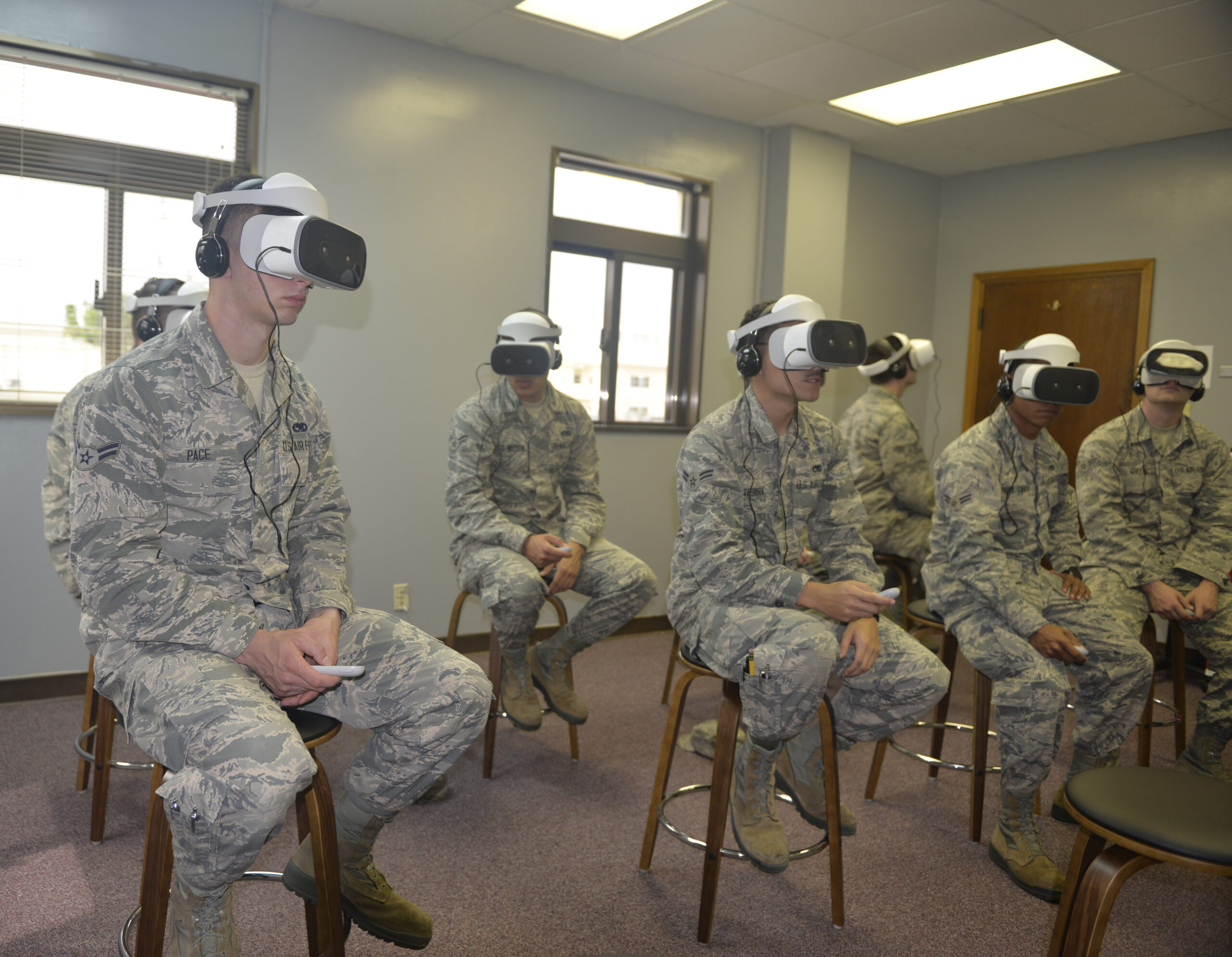
Innovation will require changes for both the DoD and industry. (Air Force)
OPINION: When Secretary of Defense Lloyd Austin signed the Department’s strategy for Joint All-Domain Command and Control, it officially kicked off a push towards open architectures, information sharing, and connected systems across the battlespace. But the capabilities to execute these concepts are often commercial, software-heavy, and do not fall neatly into existing budgeting processes. That is why DoD is piloting a software acquisition pathway and why the Senate has included a provision establishing a Commission on defense budget reform in its version of this year’s National Defense Authorization Act.
These efforts are important and needed, but there are two thorny issues that need to be effectively addressed on this innovation journey: intellectual property (IP) and security. Both issues have seen increased attention in the past few years, but they are starting to go a bit sideways. Some recent requirements in DoD competitions for unlimited IP rights have raised major concerns with potential bidders while the department’s Cybersecurity Maturation Model Certification (CMMC) initiative has struggled to achieve its desired objective to date. Fortunately, there is a real opportunity in the coming months for DoD to focus on IP and security to help get us to a place that fosters continued innovation without losing our technological edge to China.
IP has always been key to US military strength, but it has taken on a heightened role in today’s digital age with its focus on high-end commercial technology. The DoD focus on innovation has been a major theme spanning three administrations, with robust efforts to spur new entrants and new approaches to national security challenges in areas such as artificial intelligence, autonomy, and unmanned systems.
As part of these efforts, DoD has begun to rethink its approach to IP. DoD signed out a relatively little-noticed IP policy in late 2019 that seeks to rebalance its approach to IP in acquisition. The essence of the policy is to seek “early and effective understanding, planning, and communications between the US Government and industry” on IP. The department is currently preparing to launch pilot efforts and is seeking industry input to implement this approach. Industry has watched these developments with great interest — and real concern — because IP is the lifeblood of their business strategy. Both high-tech non-traditionals as well as more traditional defense firms invest significant resources on IP to help maintain their competitive edge in the marketplace.
Achieving a balance that enables DoD to effectively manage emerging capabilities without disincentivizing industry is a tricky balance that needs careful attention, as my colleagues James Hasik and Eric Lofgren have also noted. The competing IP needs for both government and industry are equally valid, but if DoD pushes more for unlimited data rights, for example, some companies may exit.
One potential area for practical application is negotiating IP and data rights to create mutually beneficial license rights; finding an appropriate place in the acquisition process to have this negotiation will be a central focus in this discussion.
Security is similarly critical to all innovation efforts. The recently unsealed Department of Justice indictments of several Chinese individuals raise major concerns. The indictments accuse four Chinese citizens of major IP theft and other crimes between 2011-2018, targeting US government facilities, companies, and universities looking for defense, biopharmaceutical, and other technologies. In particular, the large number of academic institutions targeted shows the risks facing US universities that support DoD. These threats also underscore the importance of ensuring that critical DoD suppliers are secure and reliable.
The question, of course, is what to do about it.
The administration is rethinking its approach to CMMC, which is good, but that is only part of the solution. Some government entities are looking to bring more capabilities such as software development “in house,” but as the Solarwinds cyber attack demonstrated, that approach entails significant risks as well. Supply chain visibility, underscored in the recent report of the House Armed Services Committee Defense Critical Supply Chain Task Force, is one area for attention.
Developing a repeatable approach to examine defense supply chains by technology area, for instance, could help the department identify adversary threat vectors on a more proactive basis. The just-announced government and industry collaborative established by the Cybersecurity and Infrastructure Security Agency is another model for the department to consider.
The challenges of IP and security are central to military innovation and there are no easy solutions. The best way forward is to be clear eyed about the risks and opportunities and tackle these thorny challenges head on. Government and industry need to maintain a robust dialogue and keep information flowing in both directions throughout this critical juncture on our innovation journey. There is a real opportunity for the still arriving DoD leadership to chart a path for success in IP and security for this era of renewed great power competition.
Jerry McGinn is executive director of the Center for Government Contracting at George Mason University and a former Pentagon official.
Norway’s top officer on his ‘biggest challenge,’ next frigate and new NATO neighbors
Gen. Eirik Kristoffersen, Norway’s Chief of Defense, talks to Breaking Defense about his plans for spending on new frigates and subs, the challenges of upgrading Norway’s “digital backbone” and refilling the military’s stocks.



























